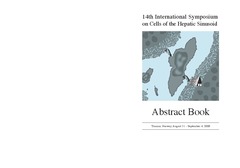A Step Towards Deep Learning-based CADs for Cancer Analysis in Medical Imaging
Permanent link
https://hdl.handle.net/10037/19673Date
2019-06-01Type
Master thesisMastergradsoppgave
Author
Pedersen, AndréAbstract
In 2018, cancer was the second leading cause of death worldwide. Early detection can reduce mortality. Screening programs intended for early detection increases the workload for clinicians. To improve efficiency CAD systems would be highly beneficial.
We have developed CAD systems using deep learning, for automatic tissue segmentation and prediction of diagnosis in lung and breast cancer. The first subproject focuses on automatic detection, 3D segmentation and malignancy prediction of lung nodules in CT, and the other aims to design an automatic method for breast tumor segmentation and histological grade prediction.
For lung nodule segmentation, we designed a new 3D-UNet architecture to handle larger input chunks than what is commonly used. Our best model achieved 0.915 recall, 2.9 FPR and 0.813 DSCTP on a subset of the LIDC data set. For malignancy prediction we designed a CNN architecture that achieved a weighted average f1-score of 0.960, only requiring a centroid initialization of the nodule.
We then designed an autoencoder for breast tumor segmentation, and achieved a DSC of 0.895 and 0.881 on two independent data sets. For histological grade prediction, we achieved a weighted average f1-score of 0.824. Using max voting we produced correct classification of 10/12 WSIs.
Publisher
UiT Norges arktiske universitetUiT The Arctic University of Norway
Metadata
Show full item recordCollections
Copyright 2019 The Author(s)
The following license file are associated with this item:
Except where otherwise noted, this item's license is described as Attribution-NonCommercial-ShareAlike 4.0 International (CC BY-NC-SA 4.0)
Related items
Showing items related by title, author, creator and subject.
-
Influence of environmental tonicity changes on lipophilic drug release from liposomes
Nikolaisen, Trygg Einar (Mastergradsoppgave; Master thesis, 2018-05-15)Introduction: Liposomes as drug delivery systems has been widely studied as a way to solubilize poorly soluble drugs, reduce side effects of chemotherapeutics and increase circulation time in vivo. Since the first descriptions of liposomes over 60 years ago, they have shown tendencies to shrink and swell when the external environment of the liposomes is altered. This phenomenon has been studied in ... -
Prognostic Impacts of Angiopoietins in NSCLC Tumor Cells and Stroma : VEGF-A Impact Is Strongly Associated with Ang-2
Andersen, Sigve; Dønnem, Tom; Al-Shibli, Khalid Ibrahim; Al-Saad, Samer; Stenvold, Helge; Busund, Lill-Tove; Bremnes, Roy M. (Journal article; Tidsskriftartikkel; Peer reviewed, 2011)Angiopoietins and their receptor Tie-2 are, in concert with VEGF-A, key mediators in angiogenesis. This study evaluates the prognostic impact of all known human angiopoietins (Ang-1, Ang-2 and Ang-4) and their receptor Tie-2, as well as their relation to the prognostic expression of VEGF-A. 335 unselected stage I-IIIA NSCLC-patients were included and tissue samples of respective tumor cells and ... -
14th International Symposium on Cells of the Hepatic Sinusoid
Smedsrød, Bård (Book; Bok, 2008-08-31)Abstract book of the symposium


 English
English norsk
norsk



